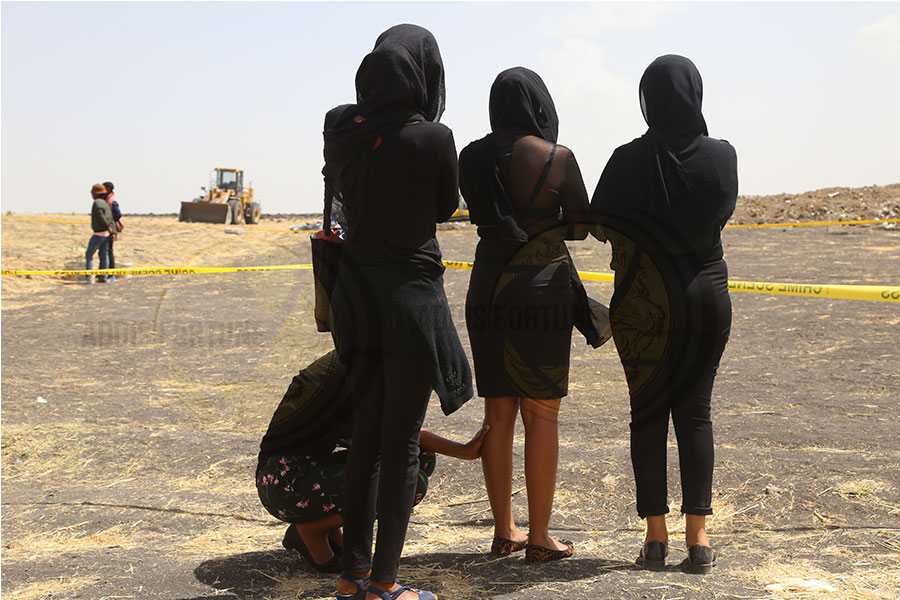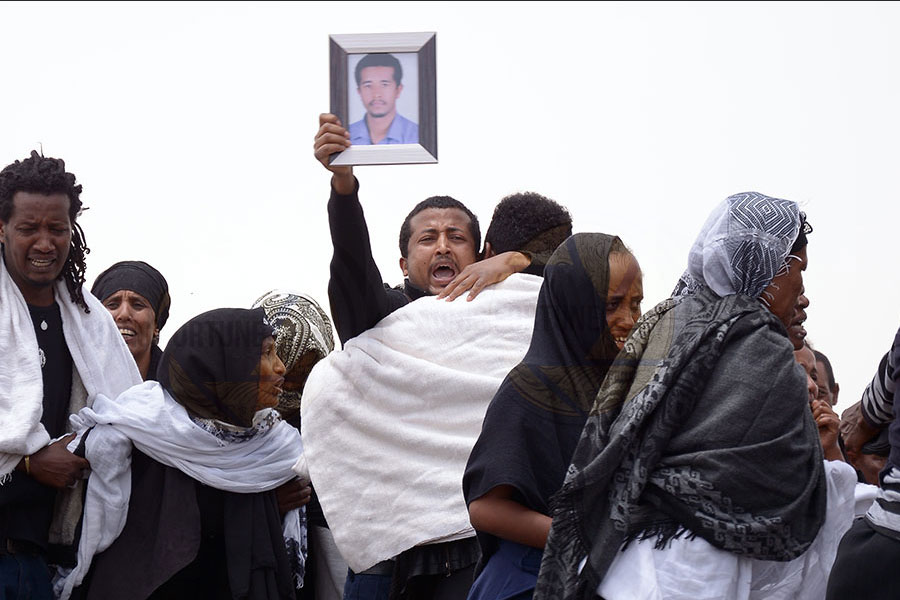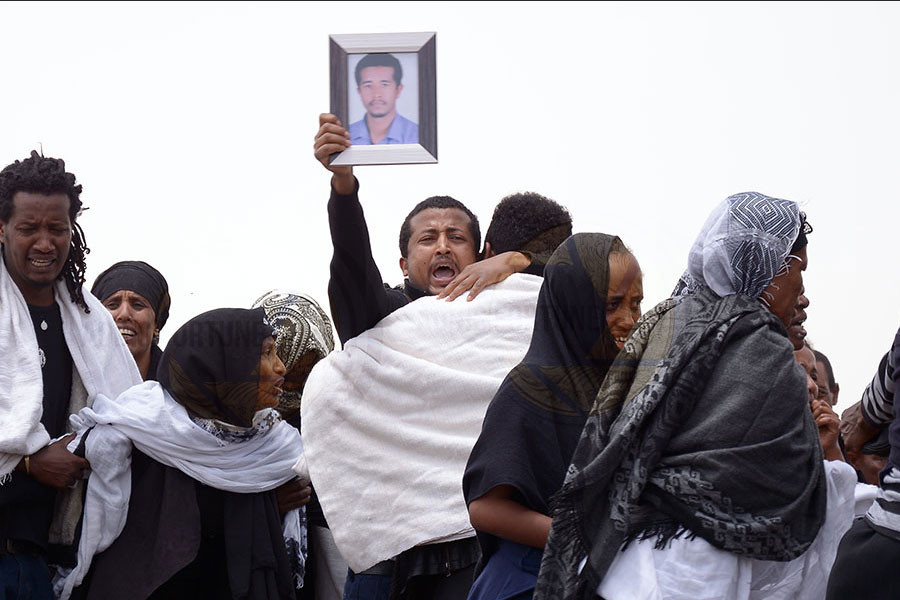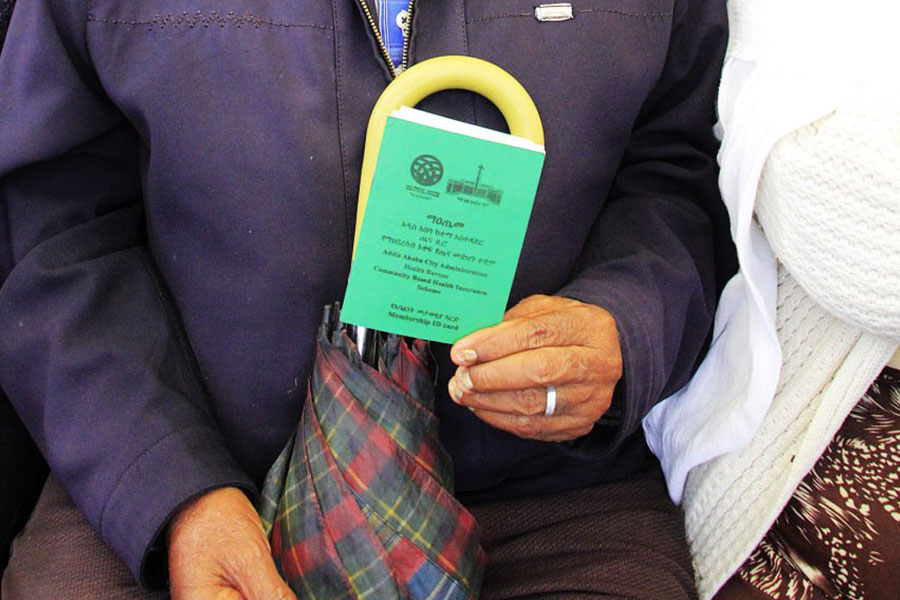
Fortune News | Nov 23,2019
Good movies have a fascinating opening scene. Great movies have three of them.
Teza opens with a dream-like sequence. There is a man, lost but determined. He seems to be taking his first steps toward self-discovery in a sunlit room, shrouded by cloth. He is walking toward something; we do not know what.
But, interspersed, we also see him being rushed into an emergency ward and screaming to himself and his mother far away, “No, I won’t die.”
Then there is a cut - more like a smooth transition - into what seems like a childhood memory. Children are sitting around a campfire, in the twilight hours, high up on a hill, riddling each other this and that.
“She was there when I went, but couldn’t find her when I returned,” asks one of them. “Dew,” one kid answers so excitedly standing up and almost jumping.
Over this shot, the title unravels, "Teza," Amharic for dew. But the awesomeness, symbolism and charm of Haile Gerima’s masterpiece does not stop there. Far from it. There are two scenes that are unforgettable and unparalleled in imagination as far as Ethiopian cinema is concerned. Even Haile would be hard-pressed to repeat something like them.
The first takes place right after the title sequence. Injera, Ethiopian flatbread, is being baked on an open firewood clay stove. The fire in the hearth blows, incidentally, to the opposite of the door. An elderly lady, referred to as “Anbirbir’s mother,” notices, and infers that this means some one beloved will soon pay a visit, perhaps her son, Anbirbir.
Without effort, poetically, mesmerisingly, that single scene encapsulates everything that is to come. The poverty and gloom that lends itself to superstition; the deep sense of destiny, founded upon nothing but faith; the idolatry and mystification of the past.
Over the fire, Haile focuses on a framed photo of a young, bright-eyed, male in a loose-fitting outfit characteristic of the 1970s and 80s - evidently her son.
“Only the fire knows that I am coming,” he narrates.
The film is about the Ethiopian psyche during the Dergueyears, manifested in Anbirbir (Aron Arefe). Educated overseas, he was a biologist expatriate working in West Germany when he heard of the fall of Emperor Haile Selassie.
Like every young person, he was an idealist. Like almost every youth exposed to modern education in Ethiopia at the time, he was a committed socialist. The imperialists were at fault for the world's oppression, they proclaimed, a great deal of them living in decidedly capitalist countries that afforded them a much more comfortable life than they ever imagined back home. If only the victims of this capitalist system were to recognise how they were being oppressed, if only they were awakened, they could defeat imperialism and institute a socialist utopia.
But Marx was never as good at explaining how a system without classes would practically work as he was at criticizing capitalism. Hence, like the parties of Lenin and Mao, the Derguebegan to improvise. Anbirbir - at the invite of another expatriate friend that returned to Ethiopia - decides to participate in this great project.
What he finds in place is a system artificially propped up by a military junta, not socialism supported and sustained by the proletariat. It was never aimed at alleviating the poverty of the downtrodden; it was merely put in place to ensure the political survival of those with power.
Haile narrates non-chronologically though, and we never find out until later in the movie why Anbirbir heads to the countryside, instead of staying in Addis Abeba where all the action seems to be. Nor are we told why he has crippling nightmares nor why he limps and has to use a cane.
While Haile slowly reveals Anbirbir’s near-past, we are treated to life in an impoverished northern part of the country. The only time we realise there is a state is when armed local government militias show up to conscript young men for the civil war that raged throughout the Dergueyears.
Otherwise, only culture and faith rule the day. Under it are peculiar characters. Thin and gaunt, they have faces with deeply etched wrinkles, a sign of their psychological and spiritual exhaustion.
The most memorable of them is Anbirbir’s mother, Tadfe (Takelech Beyene). She lights up another one of the movies most impactful scenes, which is even better than the firewood scene. It is when Anbirbir is having one of his violent nightmares, this one more forceful than usual and frightening loud enough that the whole neighbourhood hears him screaming.
Like a soldier commanded by a superior to go headfirst into battle, the old lady runs towards his room, bursts through the door, embraces her trashing son and soothes him back to consciousness. But all of that flailing he was doing has dishevelled the bed sheets, and she could see for the first time why he has been limping: one of his legs is prosthetic. She lets out a wail, a screeching cry so thin it cuts deep into the soul. Such a raw, inimitable scene is a testament to Haile’s ability to write and and constract a scene, and his neo-realist inspired casting of an actor that so parallels the character she was playing.
If Haile proves his brilliance in creating characters with the mother, he is almost boasting when he gives us Azanu (Teje Tesfahun), the loyal help of his mother's household. She is not given much attention until Anbirbir "sees" her singing in a canoe on the sea in the twilight hours (many scenes take place in the twilight hours, in fact, the entire film is tinted with muted colours paralleling this time of the day).
What a splendid narration technique it is to focus on a character we have barely paid attention to throughout the movie just when the protagonist sees her as more than just the help, a possible object of his affection.
It is not a particular scene that sets Azanu apart. It is instead how bold Haile is in asking us to sympathise with a character that would traditionally be considered abominable, even by Western standards.
He dares to present us with a character that kills her own newborn, and traces what leads to this action by presenting her within the context of the society she finds herself in and the hardship she has lived through, and asks us, without so much self-doubt, “can you blame her?”
Anbirbir does not. And that has always been curious to me. Haile has popularly been presented as a conservative Ethiopian obsessed with traditional values. Not true. In Teza, he depicts the contradictions in our cultures and outlooks we have never addressed, perhaps because we do not see them, perhaps because we do not want to.
Anbirbir is us, Ethiopians, at our most contemplative. The past threatens to blind us, the present is about to suffocate us, and a prosperous future keeps beckoning. The film does not say what will happen in the end, but it insists, like the natural background various shots are set against, that it is, for the most part, twilight hours. What comes next may be light as much as it may be darkness.
PUBLISHED ON
Mar 21,2020 [ VOL
20 , NO
1038]

Fortune News | Nov 23,2019

Life Matters | Jan 18,2019

Radar | Oct 24,2020

Radar | Jul 17,2022

Radar | Oct 26,2019

Photo Gallery | Mar 17,2019

Radar | Oct 03,2020

Fortune News | Mar 16,2019

Radar | Sep 27,2020

Fortune News | Mar 16,2019

Photo Gallery | 175338 Views | May 06,2019

Photo Gallery | 165563 Views | Apr 26,2019

Photo Gallery | 155889 Views | Oct 06,2021

My Opinion | 136808 Views | Aug 14,2021

Oct 18 , 2025
The political establishment, notably the ruling party and its top brass, has become p...

Oct 11 , 2025
Ladislas Farago, a roving Associated Press (AP) correspondent, arrived in Ethiopia in...

Oct 4 , 2025
Eyob Tekalegn (PhD) had been in the Governor's chair for only weeks when, on Septembe...

Sep 27 , 2025
Four years into an experiment with “shock therapy” in education, the national moo...

Oct 18 , 2025 . By NAHOM AYELE
In a sweeping reform that upends nearly a decade of uniform health insurance contribu...

Oct 18 , 2025 . By BEZAWIT HULUAGER
A bill that could transform the nutritional state sits in a limbo, even as the countr...

Oct 18 , 2025 . By SURAFEL MULUGETA
A long-planned directive to curb carbon emissions from fossil-fuel-powered vehicles h...

Oct 18 , 2025 . By BEZAWIT HULUAGER
Transaction advisors working with companies that hold over a quarter of a billion Bir...